Unified First Order Inertial Element Based Model of Magnetostrictive Hysteresis and Lift-Off Phenomenon
Abstract
:1. Introduction
2. The Method of Measurements of Magnetostriction and Magnetic Hysteresis Loop is Soft Ferrites
3. Principles of Modeling the Anhysteretic Magnetostrictive Hysteresis Curve
4. Proposed, First Order Inertial Element Based Model of Magnetostrictive Hysteresis and Lift-Off Phenomenon
5. Validation of the Model
6. Conclusions
Funding
Conflicts of Interest
References
- Joule, J.P. On the Effects of Magnetism upon the Dimensions of Iron and Steel Bars. Lond. Edinb. Dublin Phil. Mag. J. Sci. 1847, 76–87, 225–241. [Google Scholar] [CrossRef]
- Williams, S. Some Experimental Methods in Magnetostriction. J. Opt. Soc. A 1927, 14, 383–408. [Google Scholar] [CrossRef]
- Jiles, D.C. Introduction to Magnetism and Magnetic Materials; CRC Press: Boca Raton, FL, USA, 2015. [Google Scholar]
- Bieńkowski, A. Some problems of measurements of magnetostriction in ferrites under stresses. J. Magn. Magn. Mater. 1992, 112, 143–145. [Google Scholar] [CrossRef]
- Grössinger, R.; Sato Turtelli, R.; Mehmood, N. Materials with high magnetostriction. Mater. Sci. Eng. 2014, 60, 012002. [Google Scholar] [CrossRef]
- Bieńkowski, A.; Kulikowski, J. The magneto-elastic Villari effect in ferrites. J. Magn. Magn. Mater. 1980, 19, 120–122. [Google Scholar] [CrossRef]
- Sablik, M.; Jiles, D.C. Coupled magnetoelastic theory of magnetic and magnetostrictive hysteresis. IEEE Trans. Magn. 1993, 29, 2113–2123. [Google Scholar] [CrossRef]
- Zhou, X.; Yu, C.; Tang, Z.; Zhao, C.; Yan, H. Wiedemann Effect in Fe83 Ga17 Alloys for Magnetostrictive Sensors. IEEE Sens. J. 2014, 14, 249–257. [Google Scholar] [CrossRef]
- Li, J.-H.; Gao, X.-X.; Zhu, J.; Bao, X.-Q.; Cheng, L.; Xie, J.-X. Wiedemann effect of Fe-Ga based magnetostrictive wires. Chin. Phys. B 2012, 21, 8. [Google Scholar] [CrossRef]
- Granath, J.A. Instrumentation Applications of Inverse-Wiedemann Effect. J. Appl. Phys. 1960, 31, 178. [Google Scholar] [CrossRef]
- Hernando, A.; Vazquez, M.; Madurga, V.; Becerril, J. Inverse Wiedemann effect in <100> iron whiskers. IEEE Trans. Magn. 1977, 13, 1511–1513. [Google Scholar] [CrossRef]
- Dapino, M.J. On magnetostrictive materials and their use in smart material transducer. Struct. Eng. Mech. J. 2002, 17, 1–28. [Google Scholar]
- Oomi, G.; Mori, G. Pressure Effect on the Spontaneous Volume Magnetostriction of Fe-Ni and Fe-Pt Invar Alloys. J. Phys. Soc. Jap. 1981, 50, 2924–2930. [Google Scholar] [CrossRef]
- Sheykholeslami, M.; Hojjat, Y.; Ghodsi, M.; Zeighami, M.; Kakavand, K. Effect of magnetic field on mechanical properties in Permendur. Mater. Sci. Eng. A 2015, 651, 598–603. [Google Scholar] [CrossRef]
- Yeh, C.-S. The Effect of Hydrostatic Pressure on the Magnetic Permeability of Iron, Cobalt, and Nickel. Proc. Am. Acad. Arts Sci. 1925, 60, 503–533. [Google Scholar] [CrossRef]
- Mohammed, O.A.; Liu, S.; Abed, N. Study of the Inverse Magnetostriction Effect on Machine Deformation. In Proceedings of the IEEE SoutheastCon, Greensboro, NC, USA, 26–29 March 2004; pp. 433–436. [Google Scholar]
- Li, P.; Liu, Q.; Li, S.; Wang, Q.; Zhang, D.; Li, Y. Design and numerical simulation of novel giant magnetostrictive ultrasonic transducer. Results Phys. 2017, 7, 3946–3954. [Google Scholar] [CrossRef]
- Jiles, D.C.; Atherton, D. Theory of ferromagnetic hysteresis. J. Magn. Magn. Mater. 1986, 61, 48–60. [Google Scholar] [CrossRef]
- Calkins, F.T.; Smith, R.C.; Flatau, A.B. Energy-Based Hysteresis Model for Magnetostrictive Transducers. IEEE Trans. Magn. 2000, 36, 429–439. [Google Scholar] [CrossRef]
- Szewczyk, R. Model of the Magnetostrictive Hysteresis Loop with Local Maximum. Materials 2018, 12, 105. [Google Scholar] [CrossRef] [PubMed]
- Sablik, M.J.; Jiles, D.C. A model for hysteresis in magnetostriction. J. Appl. Phys. 1988, 64, 5402. [Google Scholar] [CrossRef]
- Seco, F.; Martin, J.M.; Jimenez, A.R. Improving the Accuracy of Magnetostrictive Linear Position Sensors. IEEE Trans. Instrum. Meas. 2009, 58, 722–729. [Google Scholar] [CrossRef]
- Wan, J.; Shu, H.; Huang, S.; Fiebor, B.; Chen, I.H.; Petrenko, V.A.; Chin, B.A. Phage-based magnetoelastic wireless biosensors for detecting Bacillus anthracis spores. IEEE Sens. J. 2007, 7, 470–477. [Google Scholar] [CrossRef]
- Bozorth, R.M. Ferromagnetism; Wiley-IEEE Press: Weinheim, Germany, 1978. [Google Scholar]
- Mandl, F. Statistical Physics; John Wiley & Sons: Hoboken, NJ, USA, 2008. [Google Scholar]
- Biedrzycki, R.; Jackiewicz, D.; Szewczyk, R. Reliability and Efficiency of Differential Evolution Based Method of Determination of Jiles-Atherton Model Parameters for X30Cr13 Corrosion Resisting Martensitic Steel. J. Autom. Mob. Robot. Intell. Syst. 2014, 8, 63–68. [Google Scholar] [CrossRef]
- Horowitz, P.; Winfield, H. The Art of Electronics; Cambridge University Press: Cambridge, UK, 1989. [Google Scholar]
- Sansen, W.M.C. Analog Design Essentials; Springer: Berlin, Germany, 2006. [Google Scholar]
- Bianchi, G.; Sorrentino, R. Electronic Filter Simulation and Design; McGraw-Hill: New York, NY, USA, 2007. [Google Scholar]
- Nelder, J.A.; Mead, R. A simplex method for function minimization. Comp. J. 1965, 7, 308–313. [Google Scholar] [CrossRef]
- Severikov, V.S.; Grishin, A.M.; Ignakhin, V.S. Magnetostriction in Fe80-xCoxP14B6 amorphous ribbons evaluated by Becker-Kersten method. J. Phys. Conf. Ser. 2018, 1038, 012066. [Google Scholar] [CrossRef]
- Tsepelev, V.S.; Starodubtsev, Y.N. Hysteresis properties of the soft magnetic nanocrystalline alloy. Int. J. Mech. Eng. Robot. Res. 2019, 8, 173–176. [Google Scholar]
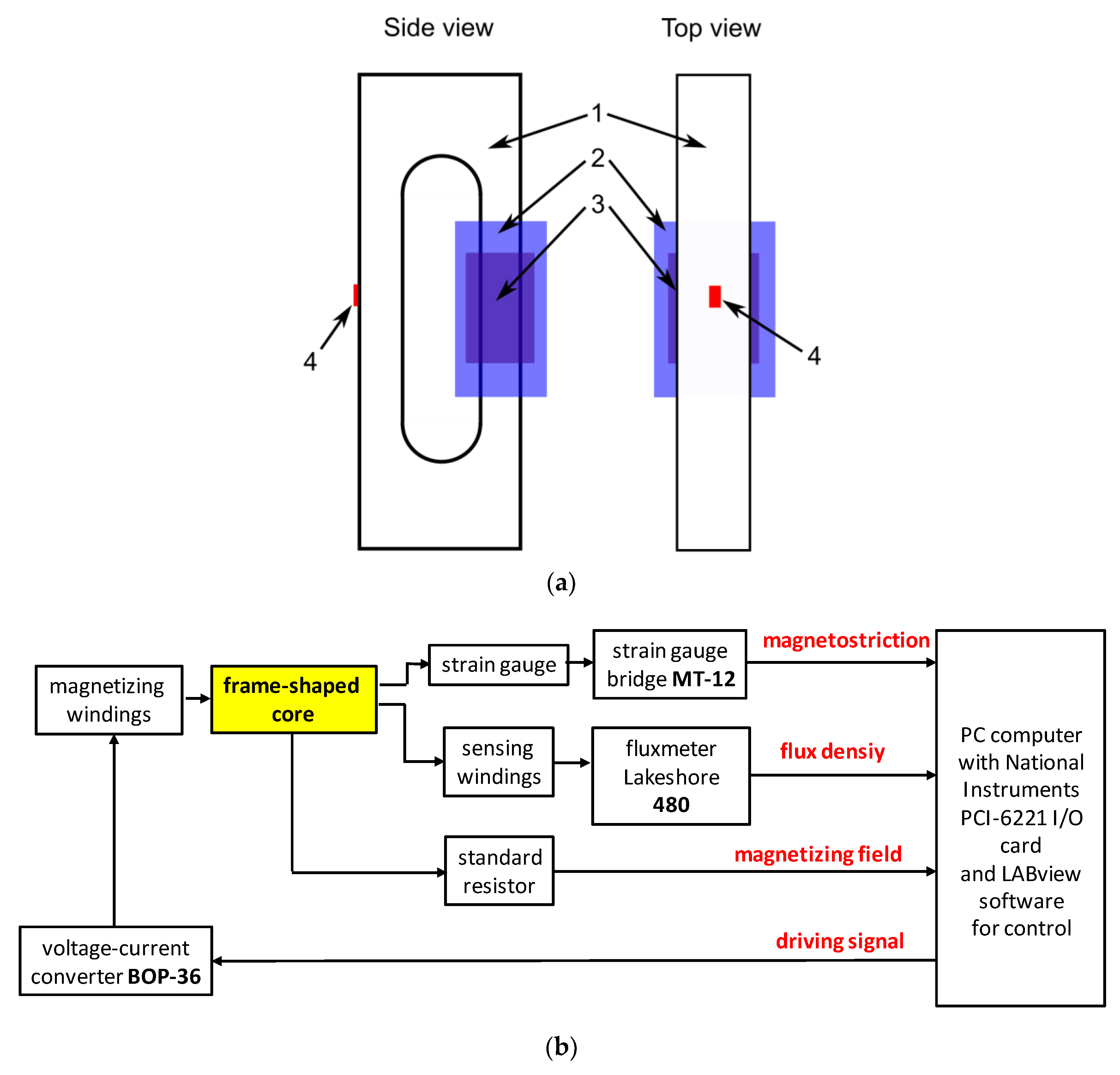

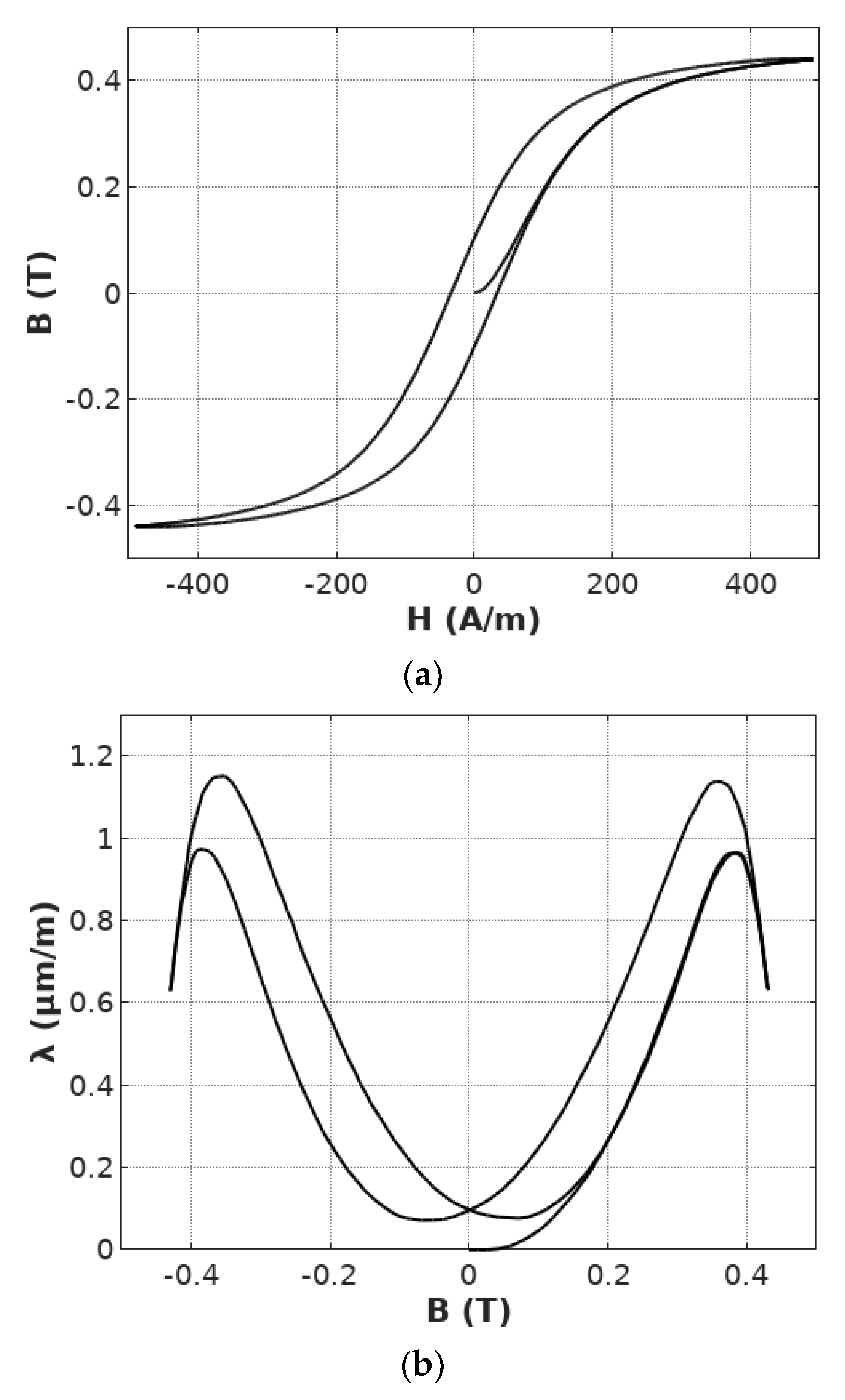
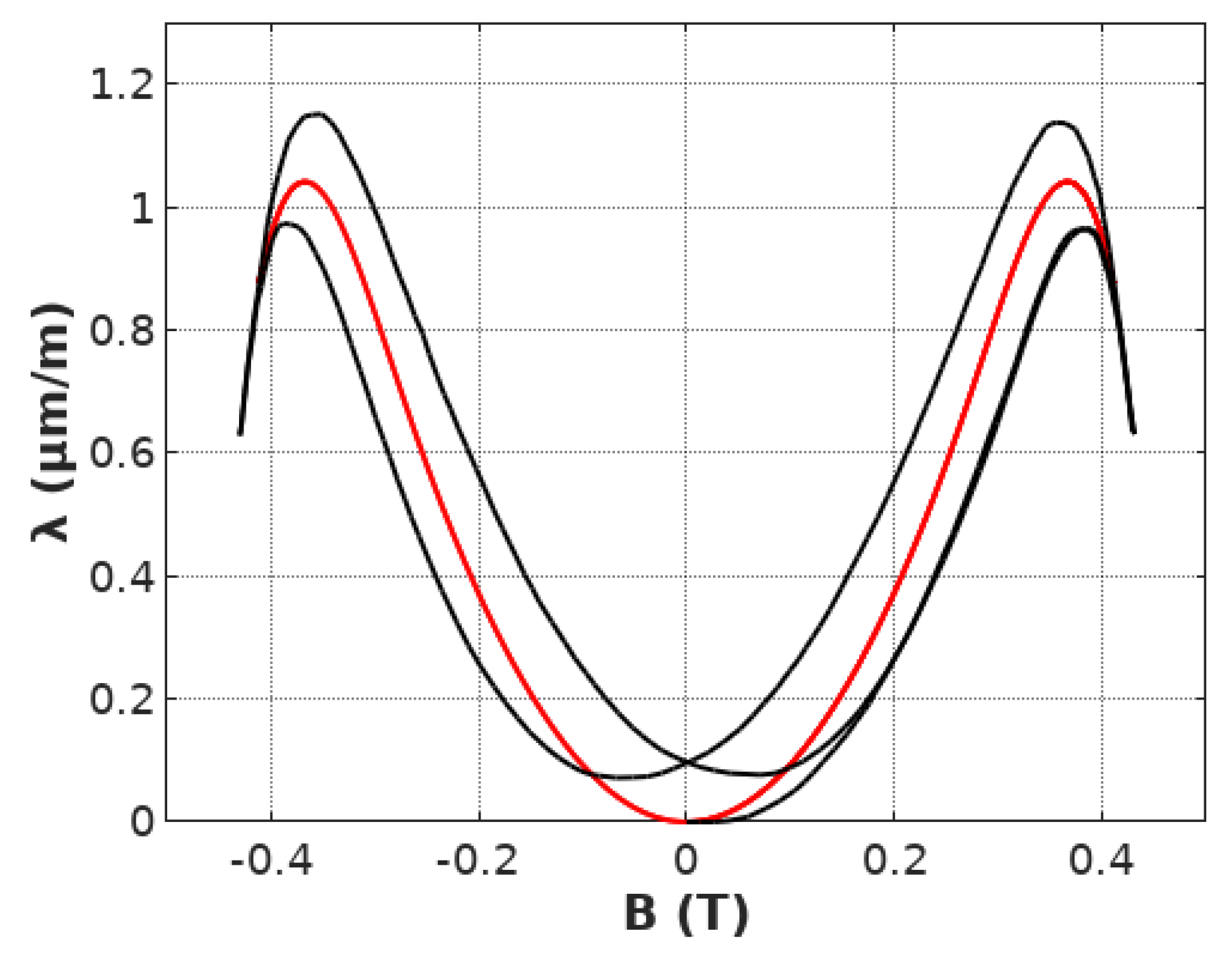
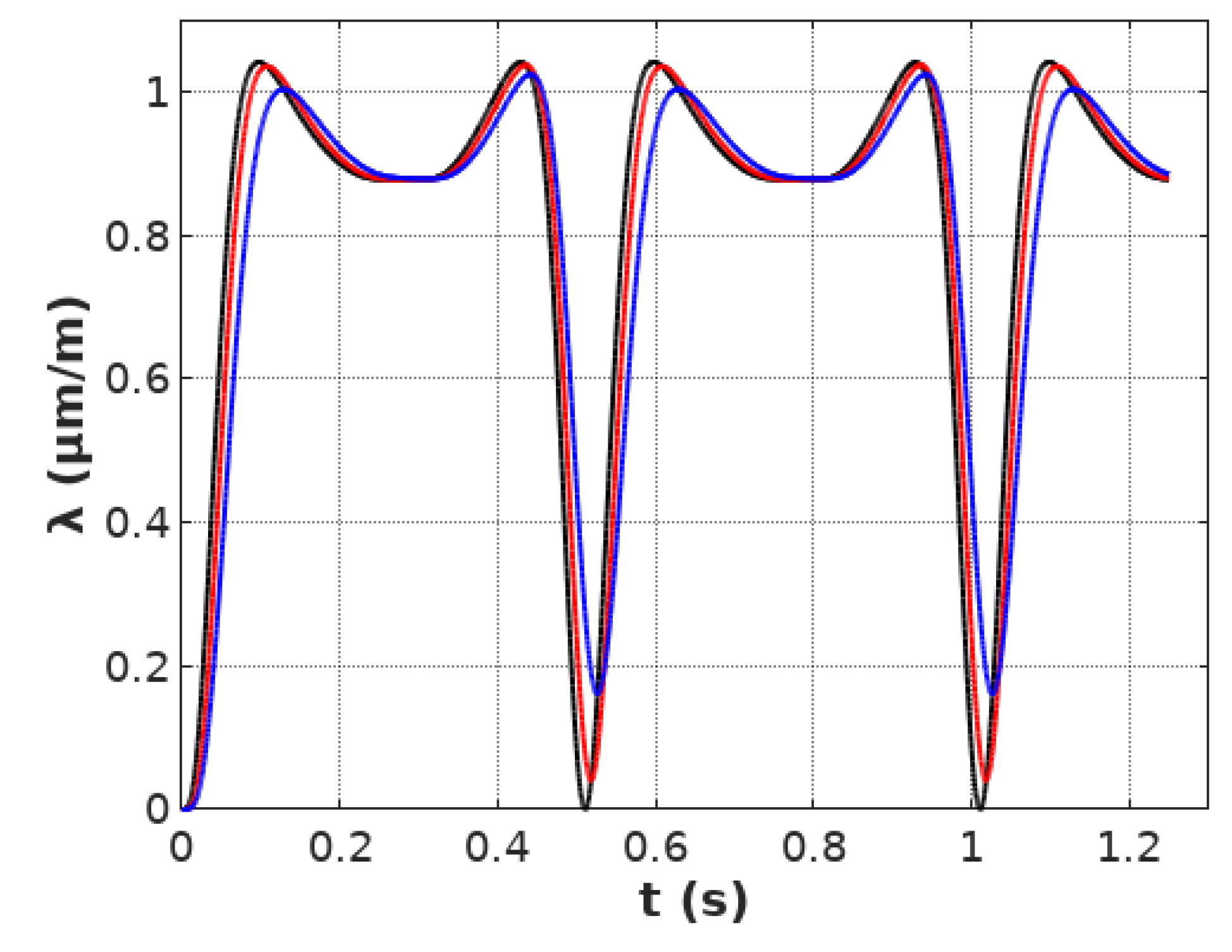
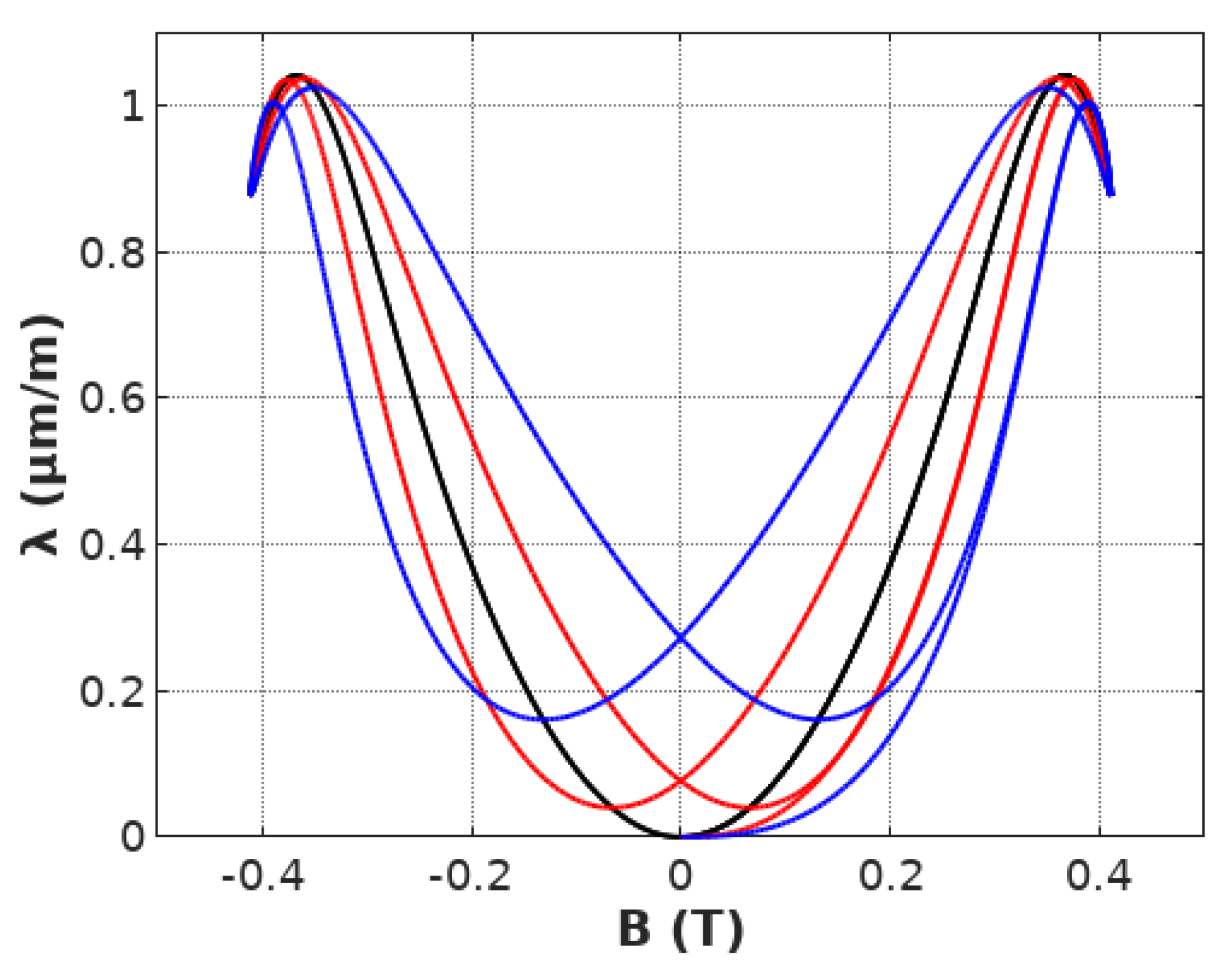

| Effect | Thermodynamically Inverse Effect |
|---|---|
| Magnetostrictive effect Changes of the sample linear dimensions during its magnetization process [4,5] | Villari effect Changes of the sample magnetization under the compressive or tensile stresses [6,7] |
| Wiedemann effect Twisting of the magnetic wire with electric current under the longitudinal magnetic field [8,9] | Inverse Wiedemann effect Magnetization of the wire due to the twisting, in the presence of circular anisotropy [10,11] |
| Barrett effect Changes of the sample volume during its magnetization process [12,13] | Nagaoka-Honda effect Changes of the sample magnetization under the hydrostatic pressure [14,15] |
© 2019 by the author. Licensee MDPI, Basel, Switzerland. This article is an open access article distributed under the terms and conditions of the Creative Commons Attribution (CC BY) license (http://creativecommons.org/licenses/by/4.0/).
Share and Cite
Szewczyk, R. Unified First Order Inertial Element Based Model of Magnetostrictive Hysteresis and Lift-Off Phenomenon. Materials 2019, 12, 1689. https://doi.org/10.3390/ma12101689
Szewczyk R. Unified First Order Inertial Element Based Model of Magnetostrictive Hysteresis and Lift-Off Phenomenon. Materials. 2019; 12(10):1689. https://doi.org/10.3390/ma12101689
Chicago/Turabian StyleSzewczyk, Roman. 2019. "Unified First Order Inertial Element Based Model of Magnetostrictive Hysteresis and Lift-Off Phenomenon" Materials 12, no. 10: 1689. https://doi.org/10.3390/ma12101689





